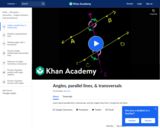
Parallel lines, transversal lines, corresponding angles
- Subject:
- Geometry
- Mathematics
- Material Type:
- Lesson
- Provider:
- Khan Academy
- Author:
- Sal Khan
- Date Added:
- 09/22/2013

Parallel lines, transversal lines, corresponding angles
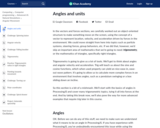
The resource "Angles and units" is included in the "Angular Movement" section of the "Advanced JS: Natural Simulations" course from Khan Academy. Some of the topics included in this resource are: HTML, Javascript, Simulations.

Angles of parallel lines
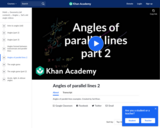
Angles of parallel lines examples
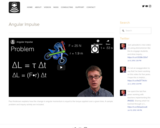
Paul Andersen explains how the change in angular momentum is equal to the torque applied over a given time. A sample problem and inquiry activity are included.

Paul Andersen explains rotating object have angular momentum. The angular momentum of a point object is the product of the distant from the center of rotation and the linear momentum. The angular momentum of an extended object is a product of the rotational inertia and the angular velocity.
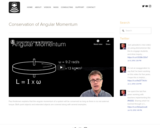
Paul Andersen explains that the angular momentum of a system will be conserved as long as there is no net external torque. Both point objects and extended objects are covered along with several examples.
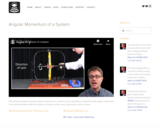
Paul Andersen explains how the angular momentum of a system can be calculated by determining the angular momentum of all individual objects within the system. An inquiry activity using a gyroscope is also included.
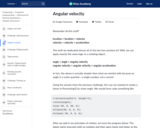
The resource "Angular velocity" is included in the "Angular Movement" section of the "Advanced JS: Natural Simulations" course from Khan Academy. Some of the topics included in this resource are: HTML, Javascript, Simulations.

Hank and his cat Cameo help teach us about animal behavior and how we can discover why animals do the things they do.
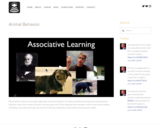
Paul Andersen steps you through eight types of animal behavior. He starts by defining ethology and explaining that behavior varies from innate to learned. He discusses each of the following with examples; instinct, fixed action pattern, imprinting, associative learning, trial and error learning, habituation, observational learning and insight.
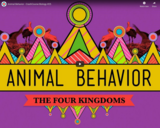
The video resource "Animal Behavior - CrashCourse Biology #25" is included in the "Biology" course from the resources series of "Crash Course". Crash Course is a educational video series from John and Hank Green.

Paul Andersen introduces the concept of ethology and contrasts kinesis and taxis. He explains the importance of courtship rituals in fruit flies. He finally shows you how to use a choice chamber to study behavior in pill bugs.
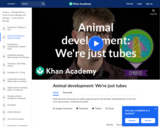
Hank discusses the process by whichorganisms grow anddevelop,maintaining that, in the end, we're alljust tubes.
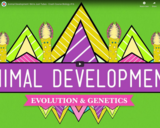
The video resource "Animal Development: We're Just Tubes - Crash Course Biology #16" is included in the "Biology" course from the resources series of "Crash Course". Crash Course is a educational video series from John and Hank Green.

Animal Diversity Web is a searchable collection of taxonomic and physiological information on many species of animals.
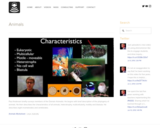
Paul Andersen briefly surveys members of the Domain Animalia. He begins with brief description of the phylogeny of animals. He then describes the characteristics of all animals, heterotrophy, multicellularity, motility and blastula. He describes eight invertebrates and vertebrates.
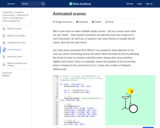
The resource "Animated scenes" is included in the "Scene management" section of the "Advanced JS: Games & Visualizations" course from Khan Academy. Some of the topics included in this resource are: HTML, Javascript, Grames, Visualizations.
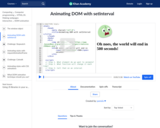
The resource "Animating DOM with setInterval" is included in the "DOM animation" section of the "HTML/JS: Making webpages interactive" course from Khan Academy. Some of the topics included in this resource are: HTML, Javascript, Web Technologies.
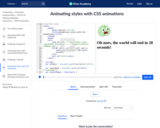
The resource "Animating styles with CSS animations" is included in the "DOM animation" section of the "HTML/JS: Making webpages interactive" course from Khan Academy. Some of the topics included in this resource are: HTML, Javascript, Web Technologies.